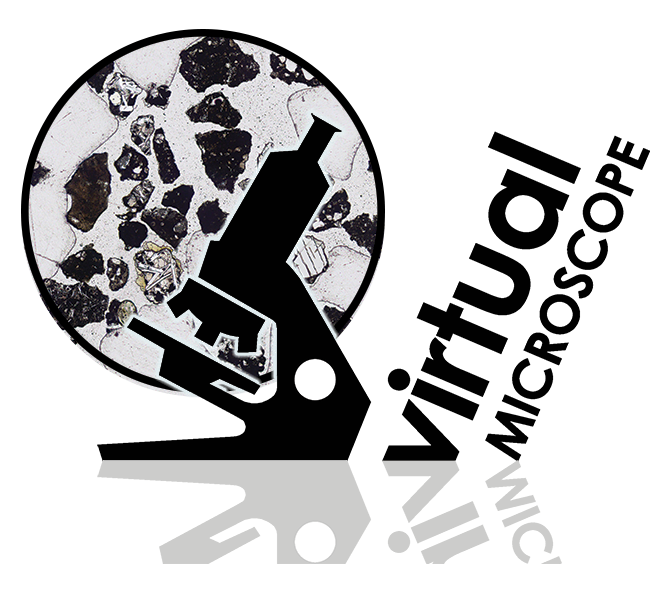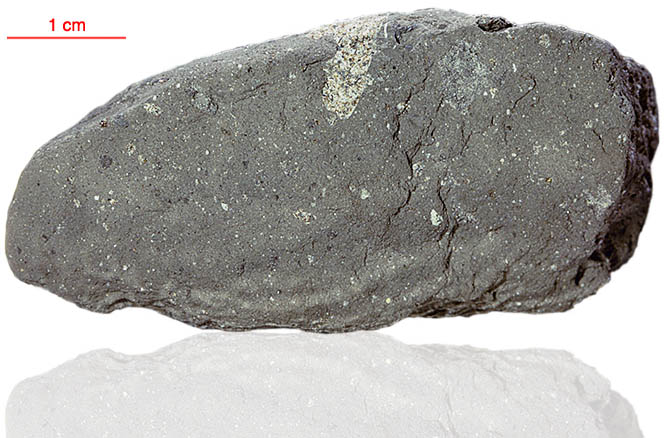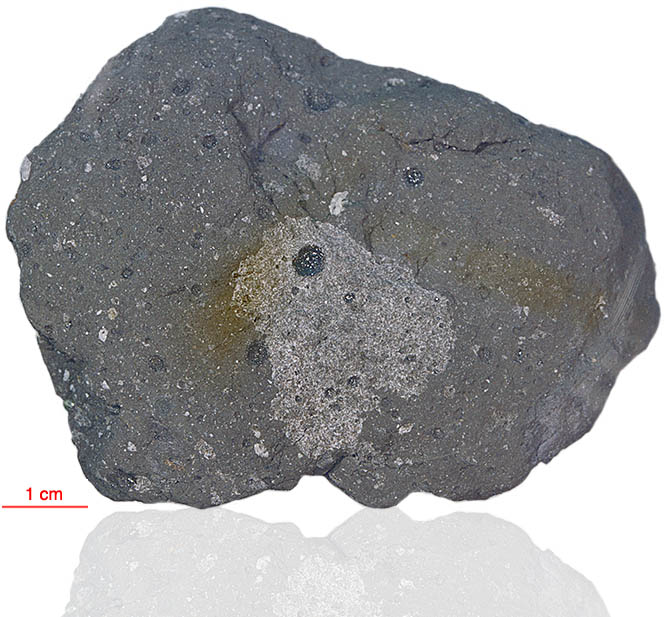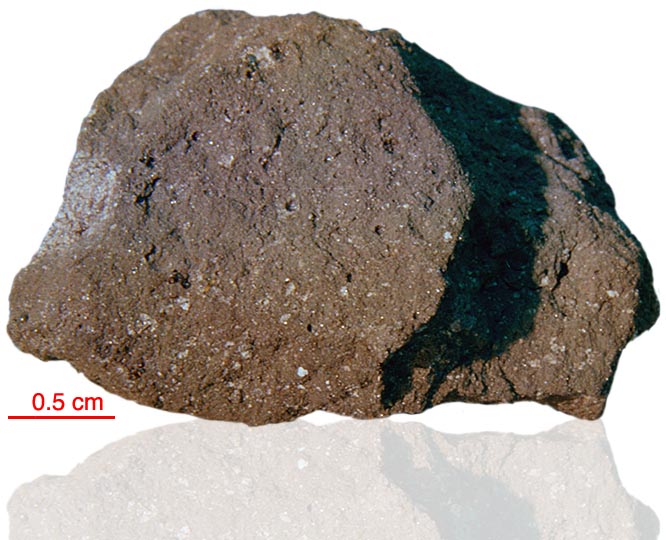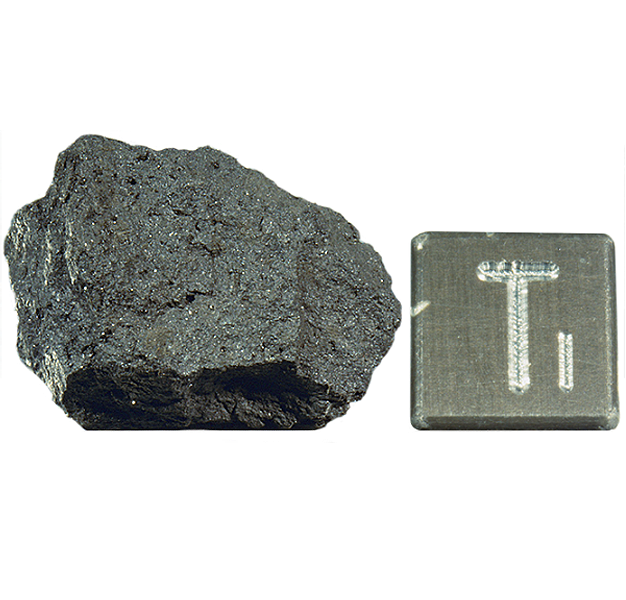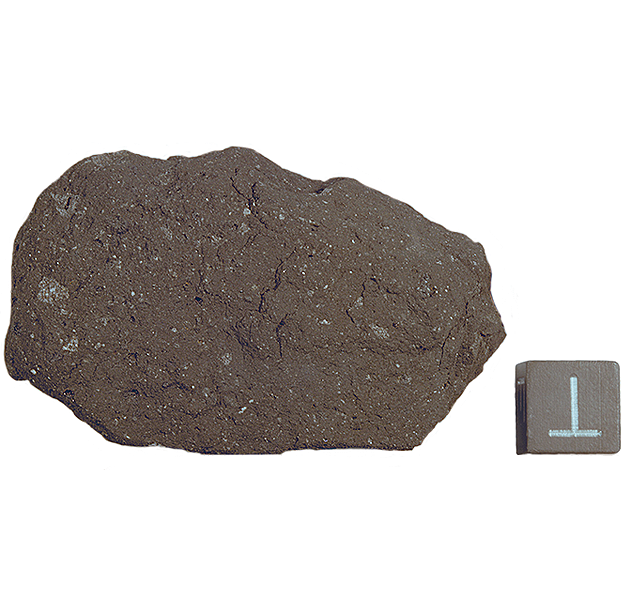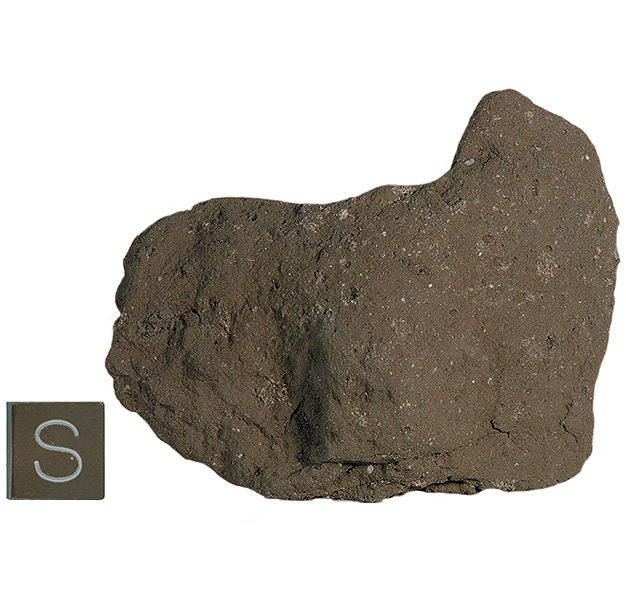
Fact sheet
Sample 10065 is a moderately coherent regolith breccia. It is welded together with many fine particles of glass but 18% is pore space. About 24% of the breccia is thought to be from the lunar highlands (plagioclase-rich anorthosites - see rotation 2). 10065 also contains basalt fragments, agglutinates, mineral clasts and glass (the latter forming irregular fragments and rounded spheres) cemented with a fine-grained dark glassy matrix. The sample is notable for the common subspherical orange glass beads it contains. These have a presumed volcanic origin. The rare species armalcolite is reported from this sample.
Surrounding the sample are flowery growths (contamination) that have developed since the thin section was prepared.
Further details of this and other Apollo samples are here: http://curator.jsc.nasa.gov/lunar/
The Apollo 11 samples create an iconic collection since they were the first rocks collected by humankind that were returned to Earth from another solar system body. The Apollo 11 team collected and returned 22 kg of rock and soil samples.
Apollo 11 launched from Cape Kennedy on 16 July 1969. An estimated 530 million people watched Armstrong's televised image and heard his voice describe the event as he took "...one small step for a man, one giant leap for mankind" on 20 July 1969.

